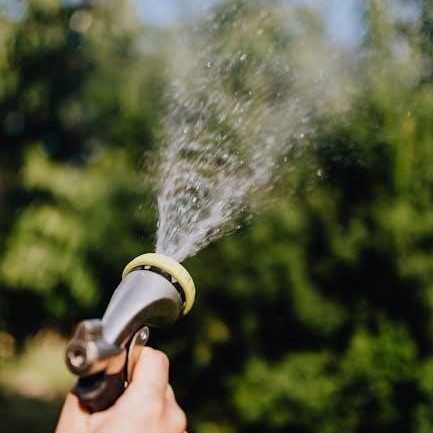Close protection‚ often associated with bodyguards‚ involves safeguarding individuals from potential threats. The principal‚ a VIP or person at risk‚ requires this personalized security. This field includes historical context of assassinations and risk management. Training is essential for those entering this profession.
Defining Close Protection and the Principal
Close protection is a specialized security service focused on safeguarding individuals from harm‚ whether physical assault‚ kidnapping‚ or other threats. It’s a proactive approach‚ aiming to deter and prevent incidents before they occur rather than simply reacting to them. The core of close protection revolves around the ‘principal‚’ who is the individual or group requiring protection. This could be a VIP‚ celebrity‚ executive‚ or anyone facing a heightened risk. Understanding the specific needs and vulnerabilities of the principal is paramount. Close protection is not simply about physical presence‚ but also about planning‚ assessment‚ and anticipation. The role is to provide a security bubble around the principal‚ allowing them to conduct their daily life with minimal disruption and maximum security. Bodyguards or close protection officers are trained to be vigilant‚ discreet‚ and prepared for any eventuality. They act as a constant‚ silent guardian‚ ensuring the principal’s safety at all times.
The Historical Context of Close Protection
The concept of close protection has roots stretching back centuries‚ evolving alongside the changing landscape of threats and societal structures. Historically‚ rulers‚ nobles‚ and other high-profile figures have always required protection due to their position and influence. In ancient times‚ this was often provided by loyal soldiers or personal guards‚ acting as a shield against potential dangers. Over time‚ the nature of threats has changed from battlefield conflicts to more targeted assassinations and kidnappings. The need for more specialized training and protective techniques has also increased. Events such as the assassination of historical figures have highlighted the significance of close protection and shaped the industry into what it is today. Modern close protection draws from both historical practices and more recent technological advancements and tactical knowledge. Understanding this historical trajectory is vital in comprehending the current practices and standards in the field of close protection. The focus continues to be on prevention and proactive security measures.
Core Competencies for Bodyguards
Bodyguards require a diverse skill set‚ including physical fitness‚ first aid‚ situational awareness‚ and defensive tactics. These core competencies ensure they can effectively protect their principals in various situations and mitigate potential risks.
Physical Fitness and Training Regimens
Physical fitness is paramount for a bodyguard‚ demanding a high level of strength‚ agility‚ and endurance. Training regimens should include a mix of cardiovascular exercises‚ such as running and swimming‚ to build stamina necessary for prolonged periods of activity. Strength training‚ encompassing weightlifting and bodyweight exercises‚ is also essential for physical engagements and carrying equipment.
Agility training‚ often involving drills and obstacle courses‚ prepares bodyguards for quick reactions and maneuvers in dynamic situations. Martial arts and self-defense techniques are integral to their physical preparedness‚ ensuring they can effectively neutralize threats. These regimens must be consistently maintained and adapted to meet the demands of the profession. Furthermore‚ physical fitness assessments should be regularly conducted to track progress and identify areas for improvement‚ emphasizing a continuous commitment to peak physical condition. Practical training exercises‚ simulating real-world scenarios‚ are also crucial for honing their skills and ensuring readiness.
First Aid and Emergency Response Skills
Bodyguards must possess comprehensive first aid and emergency response skills to handle medical situations that may arise while protecting their principal. This involves training in CPR‚ wound management‚ and the treatment of common injuries. Bodyguards should be able to assess situations quickly‚ provide immediate care‚ and stabilize individuals until professional medical help arrives. They should also be trained in how to administer first aid in various environments and under stress. Furthermore‚ knowledge of how to use an Automated External Defibrillator (AED) is crucial. Emergency response skills also extend to understanding how to coordinate with emergency services and properly communicate critical information about the situation. Bodyguards must be prepared to act decisively in a crisis‚ ensuring the safety and well-being of the principal and those around them. Regular refreshers and simulations are needed to keep skills current and effective. Training must emphasize practical application and clear protocols.
Situational Awareness and Observation Techniques
For bodyguards‚ situational awareness is paramount‚ involving the continuous observation and assessment of the surroundings to identify potential threats. Observation techniques are essential‚ requiring a keen eye for details and the ability to analyze patterns of behavior. This includes recognizing anomalies‚ suspicious activities‚ or subtle changes in the environment. Bodyguards must learn to scan crowds effectively‚ noting individuals who may be acting suspiciously. They should be proficient at using their senses to gather information and identify potential risks. Furthermore‚ they need to be able to filter out unimportant information‚ focusing on key indicators of danger. This involves training in threat assessment‚ predictive analysis‚ and the development of intuition. Effective observation also means being aware of escape routes‚ safe havens‚ and potential ambush points. Bodyguards must always be alert and proactive in their approach‚ constantly adjusting to the evolving situation around them. Regular training exercises are crucial to honing these skills and keeping them sharp.
Defensive Tactics and Self-Defense
Defensive tactics and self-defense are critical components of bodyguard training‚ equipping them to protect themselves and their principal in dangerous situations. This training goes beyond simple combat skills‚ incorporating techniques to de-escalate confrontations and create space for escape. Bodyguards must be adept at hand-to-hand combat‚ including striking‚ grappling‚ and disarming techniques. They learn to use their body weight and natural movements to their advantage. Training also encompasses the use of non-lethal weapons‚ such as batons and pepper spray‚ in a controlled and effective manner. Furthermore‚ defensive tactics emphasize situational awareness‚ allowing bodyguards to anticipate attacks and respond proactively. They must develop the mental resilience to remain calm and focused under pressure. Regular training is essential to maintain proficiency and adapt to various scenarios. It is important that bodyguards can defend themselves and their principals effectively‚ ensuring their safety and security. This also means knowing when and how to disengage from a fight.
Operational Aspects of Bodyguarding
Operational aspects of bodyguarding include team structure‚ protective formations‚ route planning and risk assessment. Surveillance and counter-surveillance are also key. These elements combine to ensure the principal’s safety during operations. Proper execution is vital.
Team Structure and Communication
Effective close protection relies heavily on a well-defined team structure‚ where each member understands their role and responsibilities. A typical team may include a team leader‚ advance security personnel‚ and close protection officers‚ each with specific tasks. Clear and concise communication is paramount for seamless operation‚ utilizing both verbal and non-verbal cues. Radios and secure communication channels are often employed to maintain constant contact‚ especially during dynamic situations. Pre-briefings and post-operation debriefings are essential for planning and improvements. A team must work cohesively‚ with members trusting each other’s abilities and judgment. Furthermore‚ understanding each team member’s strengths and weaknesses is essential for task allocation‚ promoting efficiency and a unified approach to security. The chain of command must be respected‚ ensuring order and quick response times during critical moments. Regular training and drills help to hone these skills‚ solidifying team cohesion.
Protective Escort Formations
Protective escort formations are crucial for safely moving a principal from one location to another. These formations vary depending on the threat level‚ environment‚ and number of personnel available. Common formations include the diamond‚ wedge‚ and box‚ each designed to offer maximum protection. The diamond formation provides all-around security‚ while the wedge is often used in crowded spaces. The box formation is suitable for situations with higher perceived risk. Team members must maintain spatial awareness and understand their position within the formation. These formations are not static; they dynamically adjust to changing circumstances and threats. Drills and rehearsals are critical for ensuring smooth and coordinated movement. Furthermore‚ communication within the formation is key‚ enabling quick responses to potential hazards. The objective is to create a protective buffer around the principal‚ minimizing exposure. The selection of the correct formation is based on a detailed risk assessment and understanding of potential threats.
Route Planning and Risk Assessment
Effective route planning and risk assessment are foundational to close protection operations. These processes involve identifying potential threats and vulnerabilities along a planned route. This includes analyzing crime statistics‚ traffic patterns‚ and potential ambush locations. A detailed reconnaissance of the area is essential before any movement. Contingency plans should be in place for various scenarios‚ including medical emergencies‚ traffic accidents‚ or hostile encounters. The primary objective is to minimize risk by selecting the safest and most efficient routes. Alternate routes must also be identified and evaluated. Risk assessments should consider the principal’s profile‚ including their notoriety‚ schedule‚ and vulnerabilities. The security team must use all available resources‚ including intelligence gathering‚ to anticipate threats. Furthermore‚ communication is essential for adapting the plan to changes in circumstances. The route should be constantly reevaluated based on new information. Understanding the environment is critical for effective route planning and risk assessment.
Surveillance and Counter-Surveillance
Surveillance and counter-surveillance are critical elements of close protection‚ forming a protective shield around the principal. Surveillance involves the systematic observation of an area or person to identify potential threats or hostile activities. This can be conducted through various methods‚ including physical observation‚ electronic surveillance‚ and intelligence gathering. Counter-surveillance focuses on detecting and neutralizing any hostile surveillance attempts. Bodyguards need to be adept at spotting unusual behavior or suspicious patterns that might indicate a threat. The counter-surveillance team must also maintain a low profile‚ avoiding any actions that could draw attention to their activities. Techniques include varying routes‚ changing the routine‚ and being aware of surroundings. A constant analysis of the environment is essential‚ and any anomalies should be addressed immediately. Counter-surveillance teams must be able to blend into the background and not make themselves obvious. Effective surveillance and counter-surveillance need seamless communication and coordination within the close protection team. These techniques are used to stay one step ahead of potential threats and maintain a secure environment for the principal.
Professional Development and Standards
Professional development in close protection involves formal training‚ licensing‚ and ethical conduct. Bodyguards require continuous education and adherence to a strict code. Career advancement and earning potential are tied to experience and expertise.
Formal Training and Licensing
Formal training is a cornerstone of professional bodyguarding‚ ensuring individuals possess the necessary skills and knowledge. Reputable academies‚ like the ISA Academy‚ offer comprehensive programs covering diverse aspects of close protection. These programs often include practical exercises and simulations to prepare trainees for real-world scenarios. Licensing requirements vary depending on the region‚ but often involve background checks and successful completion of accredited training. National standards are becoming core competencies‚ emphasizing the importance of formalized‚ statutory training. The process often includes theoretical coursework and practical skill assessments. Some programs focus on specific areas‚ like celebrity protection or executive security‚ tailoring the training to particular niches. Earning certifications‚ such as the Certified International Bodyguard (CIBG) award‚ is a way to demonstrate proficiency. Continuous professional development ensures bodyguards stay up-to-date with evolving threats and protection techniques‚ which is a must in a dynamic field.
Code of Conduct and Professional Ethics
A strict code of conduct and strong professional ethics are paramount in the bodyguard profession. Bodyguards must maintain the highest level of integrity and discretion‚ as they are entrusted with sensitive information and the safety of their principals. Confidentiality is crucial‚ requiring them to protect the privacy of those they serve at all times. They must act responsibly and avoid any behavior that could compromise their principal’s security or reputation. Professionalism also means maintaining a neutral stance‚ regardless of personal opinions or beliefs. Bodyguards must adhere to all applicable laws and regulations‚ both in their professional and personal lives. They must avoid conflicts of interest and act solely in the best interests of their principal. Ethical decision-making is a key skill‚ particularly during high-pressure situations. Their actions must always reflect the standards of the profession. This ensures trust and reliability. It also builds a positive image for all involved in close protection.
Career Paths and Earning Potential
The bodyguard profession offers diverse career paths‚ starting with entry-level positions and progressing to specialized roles. Initially‚ one might begin in general security before transitioning into close protection. With experience and further training‚ bodyguards can move towards protecting high-profile individuals‚ such as celebrities or executives. Some choose to specialize in areas like protective driving‚ surveillance‚ or risk assessment‚ boosting their earning potential. The earning potential varies based on experience‚ location‚ and the type of client. Entry-level roles may start around 20‚000 to 30‚000 per year‚ while those guarding VIPs can earn upwards of 100‚000 annually. Factors like expertise‚ geographical location‚ and the client’s risk profile can dramatically influence compensation. Continuing education‚ certifications‚ and specialized skills will enhance career advancement and earning potential. Networking within the industry can also open doors to better opportunities. The bodyguard profession offers a dynamic and rewarding career path for those who possess the necessary skills and dedication. It also provides financial reward in the long term.



